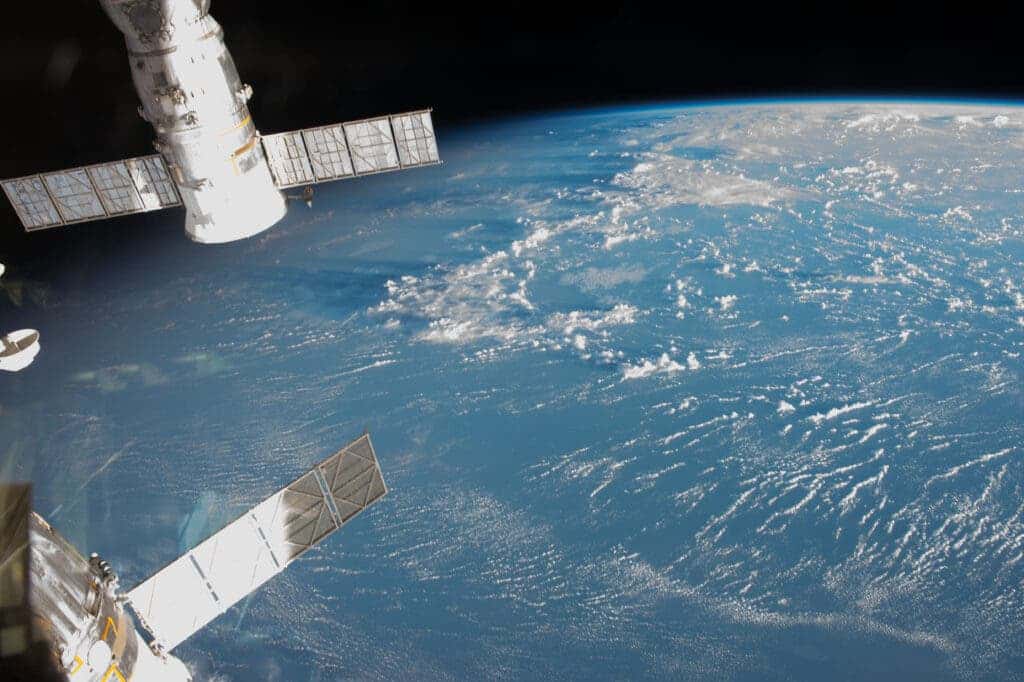They’re all extremely wealthy, and they have one more thing in common: they’ll be spending an eight-day orbital trip on the International Space Station sometime next year, part of the first fully-private astronaut crew to journey the ISS.

It’s an interesting trio: one is a former Israeli Air Force pilot, another is a Canadian investor, while the last is an American real estate tycoon. Eytan Stibbe, Mark Pathy, and Larry Connor will become the first space tourists in history, each paying a whopping $55 million for the honor, under the watchful eyes of Michael López-Alegría, a former NASA astronaut.
López-Alegría flew to space four times and spent 10 years as NASA’s ISS program manager. Now, he is a vice president and founder of Axiom Space, the company behind the project.
“This is really groundbreaking,” López-Alegría told CNBC, as “never has an entire crew been non-professional astronauts.”
There’s nothing special about the three tourists, other that they can afford the experience. They’re just guys “who want to be able to go to space”, said López-Alegría.
It’s a watershed moment for human space flight. While it’s not pushing the boundaries of what we can do, it’s pushing a different boundary: that of making space more accessible. Sure, it’s only accessible for the filthy rich right now, but it’s still a step up from ‘nobody’.
The crew’s flight to the ISS will take place at some point next year if everything goes according to plan. The four will fly 250 miles above the Earth over the course of two days, after which they’ll spend 8 days aboard the ISS, where they’ll be involved in “research and philanthropic projects”, Axiom said in a statement. They’ll be living alongside the astronauts working on the ISS.
There aren’t any bedrooms for them on the ISS, but sleeping in zero G is pretty much the same anywhere you do it, says López-Alegría — you just close your eyes.
It’s not the first time a non-astronaut was flown to the ISS. Over the years, several wealthy individuals made their way to the space station in the early 2000s. But they were brought there aboard the Russian Soyuz, and they were always accompanied by professional astronauts heading to the ISS. This is the first purely touristic flight.
This was made possible by a change in NASA policy that came in 2019, allowing private astronauts flights to the ISS, as part of the agency’s plans to diversify its operations and encourage commercial space partnerships.
If everything goes right, it’s a win-win situation. For the space tourists, it will be an amazing opportunity that comes at a fraction at their net worth. For NASA, it’s a profit-making system that can funnel additional funding for research and other projects into the agency. It costs NASA $11,250 per astronaut per day for support systems, $22,500 for food, air, and medical supplies, and $42 for energy. It’s a hefty price, but it’s still a far cry from the $55 million the space tourists will be paying. The whole mission will cost about $1.1 million for the four of them.
Space tourism is bound to boom, with all the private enterprises working on it. Virgin Galactic offers groups of four the experience of zero G for a few hundred thousand dollars, SpaceX is already heavily involved in NASA projects, and Jeff Bezos’ Blue Origin will also launch suborbital experiences with its vertcally launched New Shepard rocket. But being the first of its kind, this mission will likely define how future ones take place.
So, there you have it — your dream of flying into outer space is now available for non-astronauts as well. All you have to do is become very (very) rich and get a bit lucky. No biggie.









